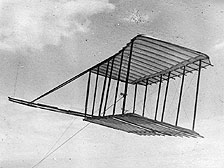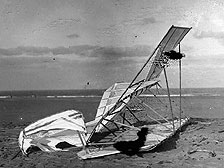
In 1900, the Wrights, pioneers of aviation, were already deeply involved with their work with flight, following their encouraging kite tests and initial research in 1899. In May, Wilbur wrote to Octave Chanute, starting a correspondence that would last for ten years. In September, the brothers were in Kitty Hawk, beginning the first season of experiments that would ultimately result in the triumph of 1903.
The 1900 season established the fundamental practices the Wrights would develop over the coming years: discrete periods of focused experimentation, the meticulous recording of test results and conditions, the use of photography for record keeping and for further flight analysis, and the adoption of the dunes of the Outer Banks as their field laboratory.

The 1900 flight tests themselves were only partially successful. The brothers had hoped to have “hours” of time in the air in order to gain experience in controlling their machine in the air. Due to inadequate lumber available locally, the glider’s wing span was shorter than planned and proved insufficient to carry the weight of the pilot. Although their total flying time amounted to a only couple of minutes and the machine suffered a major crash, the Wrights were greatly encouraged by the effectiveness of their control system and the soundness of their design. A return trip was planned for the following year with a new machine and even greater expectations. (McFarland, pp.105-107)
The performance of the 1900 glider was not what the brothers had expected — it was capable of lifting only 75 pounds. Our reproduction was successfully built in 2003.
